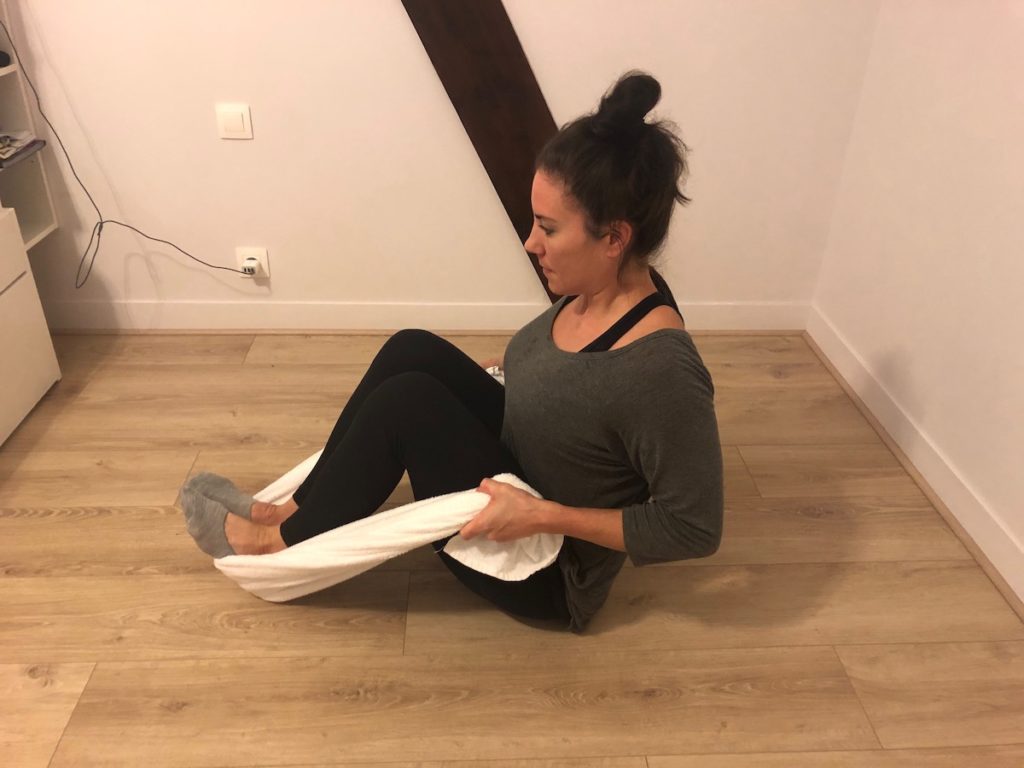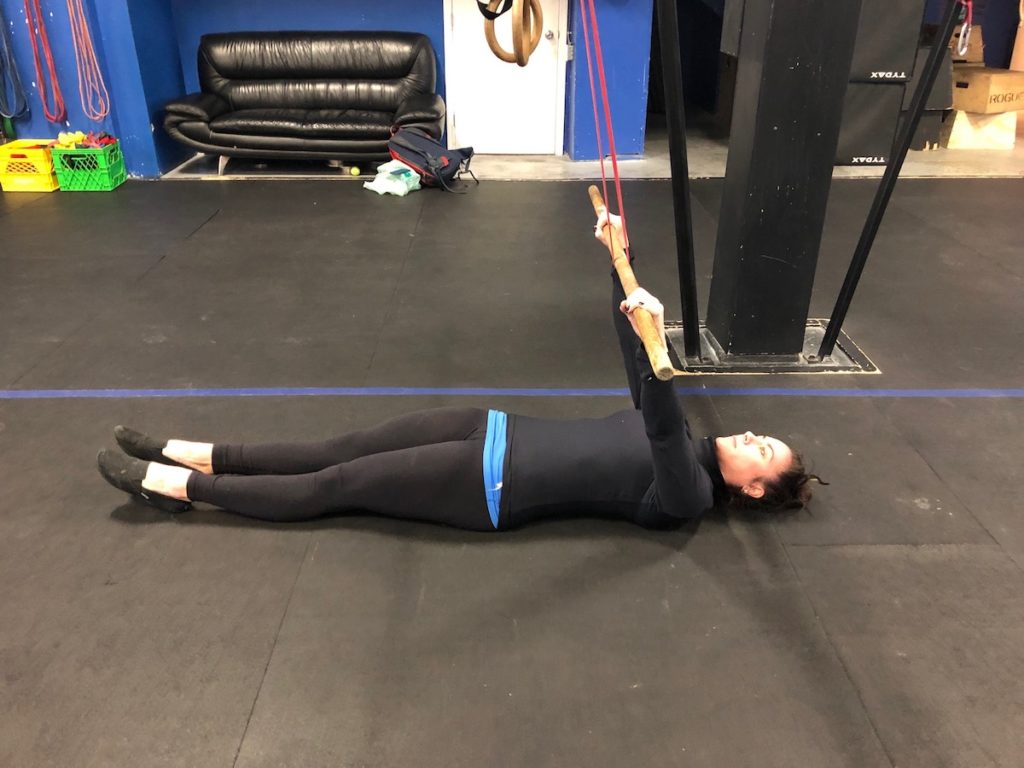When it comes to training with minimal or no equipment, there are undoubtedly more pushing than pulling options: push-ups, handstand push-ups, burpees, bench or chair dips, dumbbell bench press or floor press, dumbbell strict press, to name a few.
As for pulling, the options seem a bit more limited. If you have dumbbells, maybe you have been dabbling with some bent over rowing, and you’re probably starting to feel like your training program should be called death by dumbbell rows. Or maybe you actually did find a tree branch in your backyard to support your bodyweight for a pull-up. It worked for two reps, and then you got a big chunk of bark in your eyes.
While it takes a little more creativity, there are practical ways to keep pulling without pull-up bars, rings or barbells. Even without any equipment at all.
Here are 5:
1. Seated Isometric Towel Rows
Find a big beach towel—ideally a really long one that is longer than you are tall. Take a seat and bend your knees all the way to your chest. Then put the towel around your feet, and hold on to one end of the towel with each arm.

From there, build tension in your body and try to pull your elbows back as far as you can in a max effort pull. Hold for 10 seconds and then relax. Now straighten your legs out a bit and repeat. Hold for 10 seconds and relax. Then straighten your legs out a little bit more until they’re almost straight, and aim for one final 10-second max effort pull.

As you’re doing this, keep your collarbones nice and broad and your sternum neutral. Also, make sure your shoulders don’t slump forward.
Repeat those 10-second contractions in the three leg positions five times. Rest one minute between sets of three.
2. Pushing Negatives
If you really slow down the negative portion of a pushing movement, such as a push-up, handstand push-up or bench press, you’ll find yourself using your lats a great deal. And although you’re not pulling, per se, you will be activating and using your lats, which will translate to various pulling movements.
Try 10 push-up or handstand push-up negatives, all as singles, where you take 6-10 seconds to lower all the way to the ground, focusing on using your lats to resist yourself from dropping to the ground faster. Rest as needed between the 10 reps.
3. Table Row Variations
If you have a sturdy table you can grab onto, position yourself under the table as if you’re doing a ring row. Then pull yourself until your chest hits the table, similar to an inverted barbell row.


Try 5 sets of 6-10 reps.
If that feels too easy, here are three ways to make them more challenging:
a) Add elevation: Elevate your feet on a low chair or box under the table.
b) Add a tempo: Lower your body for three seconds, and take three second to pull your body to the table.
c) Turn it into an isometric hold: Can you hold your chest to the table for 30 seconds?
4. Dumbbell High Pulls
If you do have dumbbells, high pulls are an effective way to get you pulling vertically. You can do these with a single arm or with two dumbbells. Focus on maintaining a neutral posture, on keeping your shoulder blades down, and on driving the dumbbell vertically with your elbow, until it reaches your shoulder height. Make sure you lower the dumbbell with control each time.
If you have chronic shoulder issues, don’t do these if they cause any pain, or reduce the weight to a load that doesn’t cause any pinching or pain.
Try 5 sets of 10 reps on each arm. How heavy can you go for 10 reps?
Here’s a challenge from The Active Life Rx, a company made up of health professionals who teach coaches how to get their clients out of pain and moving correctly: Can you do 10 reps per arm at 33 percent of your bodyweight? If you can, you’re well on your way to having healthy and strong shoulders.
5. Resistance Band Pulling
Resistance bands are inexpensive, take up no room and are an effective way to work on your pulling muscular endurance from home.
Four exercises I like:
Bent arm lat pulldowns: Throw the band over a doorway, or a hook you anchor from above. Position yourself in a kneeling or seated position. Start with straight arms, keep your elbows wide, and pull until your elbows reach your hips. Keep these slow and controlled and the reps high enough that you’re feeling a serious burn by the end.
Hollow hold lat pulldowns: Again, anchor the band directly over your head. Lay flat and grab the band at eye level. Then pull the band into your hips, all the while pulling your body into a hollow body position. Make sure your lower back stays on the ground the entire time.


Seated banded rows: Take a seat and anchor the band at chest height. Start with your arms straight and then pull your elbows back as far as you can.
Face pulls: Anchor the band above you so that you can grab the band with straight arms approximately 45 degrees above your head. Then pull your arms straight back until the band touches just below your chin.
Add three sets of 15-25 reps—depending on your strength and the thickness of the band—of each of the above to your warm-up, or post-workout routine.